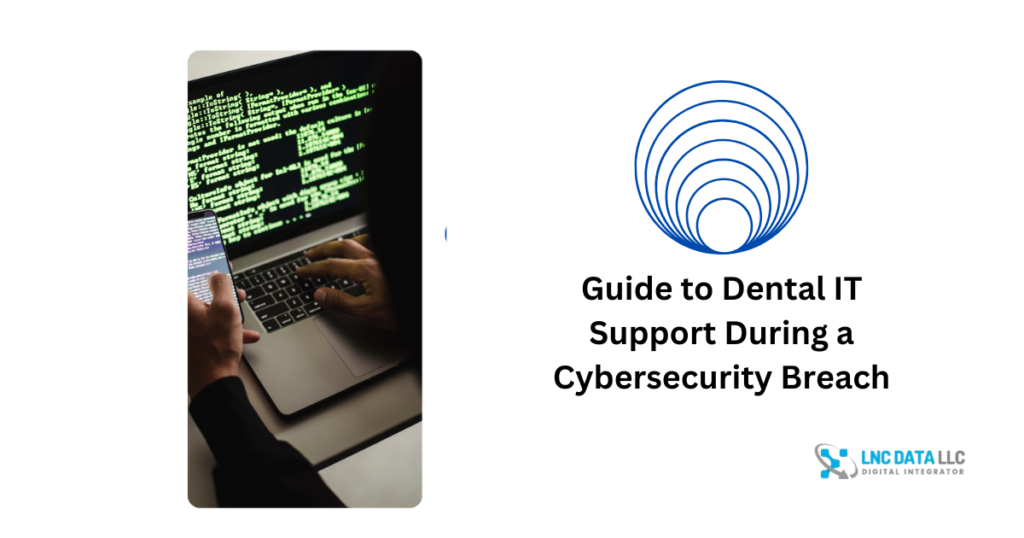
The dental industry is revolutionized like any other industry in this world with modern technologies and performs its operations using digital solutions. As technology grows, so do the number of challenges. Cybersecurity is one of the biggest challenges today’s companies are facing. For the dental industry, this issue is more serious as it includes patients’ data. Your reputation is also at risk if your patient data gets leaked or if you do not follow HIPAA compliance. In this blog, we will discuss the essentials of endodontic practices.
Why Dental IT Support Is Important
Setting up computers and networks is one part of dental IT service, but this service is more complex than that. It secures the data and makes your digital operations efficient. A dental IT service is the backbone of a secure digital environment, so you can work without worrying about anything other than your patients.
Cybersecurity Breach Identification and How to Do It
If a cybersecurity breach is happening, you should identify that it’s happening, as it is the first step of cybersecurity management. But how do you identify it? There are some signs you should look for that commonly occur if there is a cybersecurity breach. If you notice any unusual activity, unauthorized access attempts, or random software installations, how can a dental IT support team help? They can recognize these signs early on and help you minimize any security risk.
What to Do If you Identify a Cybersecurity Breach
Once you identify or suspect anything suspicious, you should immediately take these actions to protect your data. What dental security teams usually do is:
- Separate the affected system and disconnect all the affected systems from the network to prevent further damage from malicious software.
- Analyzing the breach is the second step, where IT professionals can detect the scope of the breach and who gets affected (e.g., patients, etc.).
- The third and most important step is protecting the backup data. They make sure that the backup data is safe and focus on the data recovery process.
Communication Is Necessary
Clearly communicating the cybersecurity risks and data breaches is very important. Dental IT solutions have strategies for maintaining communication between IT staff, doctors, and patients to avoid any misunderstandings. Keeping everyone informed helps maintain trust and reduces panic.
Recovery and Prevention
After these steps, the focus shifts to the recovery process and future security. The steps involve:
- First, IT professionals recover data using secure backups.
- They update the systems and software to address known threats.
- They train the staff to protect data in the future and avoid these situations, as employee errors are often a major cause of cybersecurity breaches.
Collaboration with a reputable Dental IT support provider
Partnering with a trusted Dental IT support provider is essential for ensuring the security, efficiency, and reliability of your practice’s IT systems. Dentists have unique IT needs, such as safeguarding patient data, maintaining HIPAA compliance, and ensuring minimal downtime to avoid disruptions in patient care.
When choosing an IT support provider, it’s crucial to look for professionals who:
Select a provider with a deep understanding of the dental industry and the specific technologies used in dental practices, such as practice management software and imaging systems.
Work with a team that has years of experience delivering successful IT solutions to dental practices, ensuring they are familiar with the challenges and requirements of your field.
Look for a track record of satisfied clients and case studies showing their ability to handle cybersecurity, data recovery, and ongoing IT management effectively.
Choose a provider who customizes their services to meet your practice’s unique needs, rather than offering generic IT solutions.
By collaborating with a reliable Dental IT support provider, you can focus on patient care with the confidence that your practice’s technology is secure, compliant, and optimized for success.
Conclusion:
Securing your dental practice requires clear communication, effective recovery strategies, and collaboration with a trusted Dental IT support provider. By maintaining open communication about cybersecurity risks, keeping all parties informed, and reducing misunderstandings, trust is preserved. Recovery involves restoring data through secure backups, updating systems to address vulnerabilities, and training staff to prevent breaches caused by human error. Partnering with an experienced Dental IT provider ensures tailored solutions, compliance, and protection of patient data. With the right strategies and support, you can focus on patient care while your IT systems remain secure and efficient.